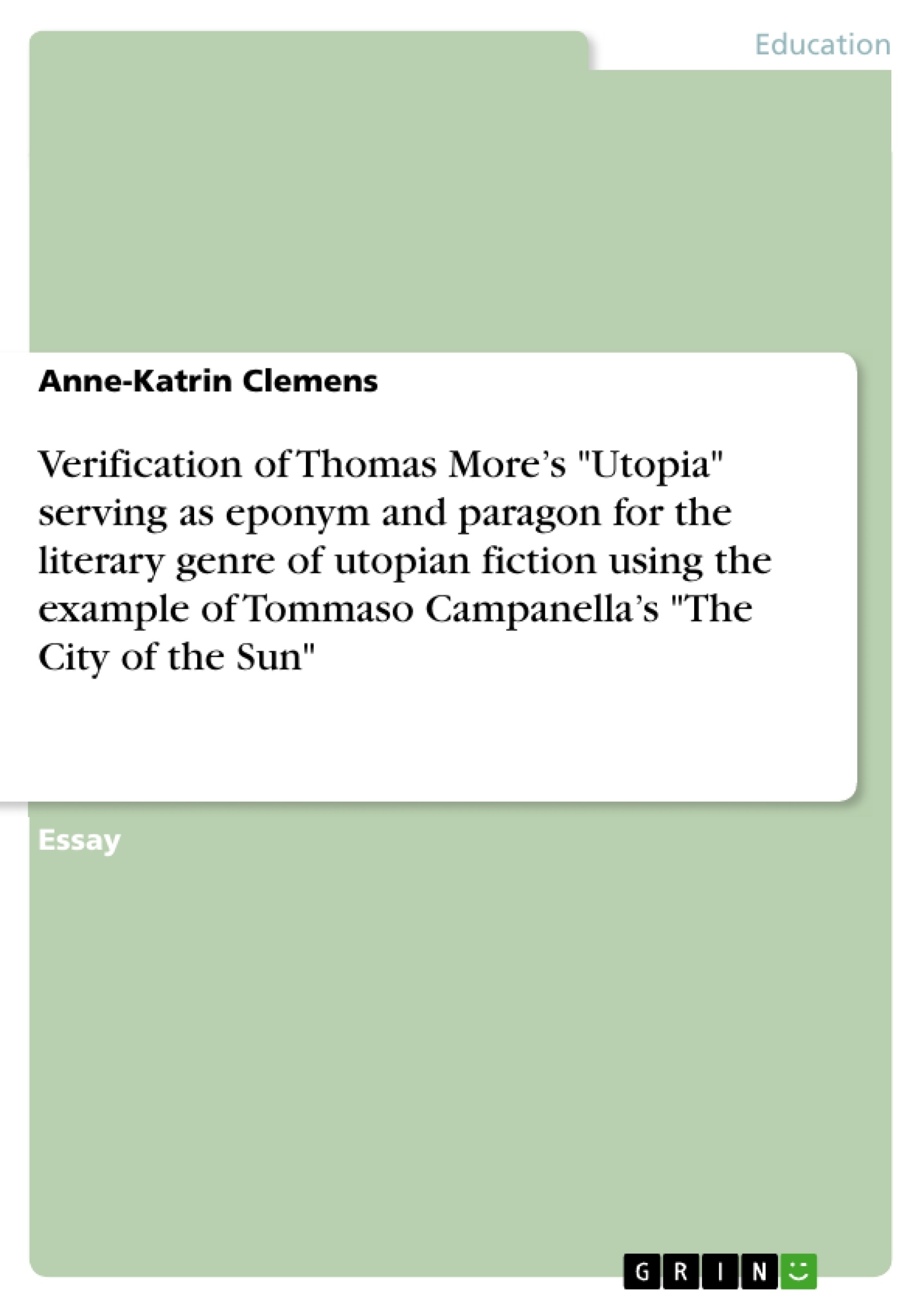In the following paper I will discuss the role of Thomas More’s work "Utopia" for the literary genre of utopian fiction. I will explain that the novel not only served as an eponym, but also as a model for the following literary works of utopian fiction. To prove the importance of "Utopia" in this regard, I will explain the definition of a utopia and the elements that make up the literary genre of utopian fiction. I will further compare selected structural and thematic aspects of "Utopia" and Tommaso Campanella’s utopia "The City of the Sun" and show the influence the earlier work had on the latter. In addition to that, I will finally discuss how several differences in these and other utopian novels can be explained.
Table of Contents
- Essay: Verification of Thomas More's Utopia serving as eponym and paragon for the literary genre of utopian fiction using the example of Tommaso Campanella's The City of the Sun.
- Purpose of this paper
- Basic concepts of utopian fiction
- Thematic aspects in both works
- Utopian socialism
- Warfare
- Science and religion
- Structural aspects in both works
- Dialogical structure and travel report
- Fictionality
- Major differences and their explanations
- Bibliography
- Works cited
Objectives and Key Themes
This essay examines the significance of Thomas More's Utopia for the literary genre of utopian fiction. It explores the novel's role as an eponym and model for subsequent utopian works, particularly examining its influence on Tommaso Campanella's The City of the Sun. The essay defines key concepts of utopian fiction, analyzes thematic and structural similarities and differences between the two works, and discusses how the variations between them can be explained.
- The role of Utopia as an eponym and model for utopian fiction
- Key concepts of utopian fiction, such as the ideal society, fictionality, and the tension between utopia and reality
- Thematic comparisons between Utopia and The City of the Sun, particularly focusing on utopian socialism
- Structural similarities and differences between the two works, including the dialogical structure and the use of fictionality
- Explanations for the differences between the two utopian models
Chapter Summaries
The essay begins by establishing the purpose of the paper, which is to explore the impact of Utopia on the genre of utopian fiction. It then delves into the definition of utopia and its key characteristics, such as the ideal society, the use of fictionality, and the tension between utopia and reality.
The essay then examines thematic and structural similarities and differences between Utopia and The City of the Sun. Both texts depict utopian societies with common features, including a strong emphasis on socialism and communal ownership of resources. However, they differ in their conceptions of family and the role of the state in individuals' lives. For example, Utopia depicts a society where individuals work for a set number of hours per day to produce sufficient goods, while The City of the Sun presents a society with a much shorter working day.
Keywords
The key terms and concepts of this essay include utopian fiction, Utopia, The City of the Sun, utopian socialism, fictionality, ideal society, thematic analysis, structural analysis, and historical context.
- Quote paper
- Anne-Katrin Clemens (Author), 2010, Verification of Thomas More’s "Utopia" serving as eponym and paragon for the literary genre of utopian fiction using the example of Tommaso Campanella’s "The City of the Sun", Munich, GRIN Verlag, https://www.grin.com/document/200200



